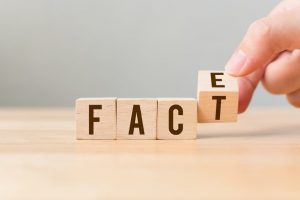On Education: Confronting Political Polarization in the Social Studies Classroom
Politics today are highly polarized, and are in danger of becoming more so.
“Politicians used to recognize that their opponents had the same goal: Make the world a better place for their constituents. Now debate’s greatest accomplishment has been to diminish the integrity of office,” said Lawrence Lhulier in his March 2017 Education Week article, “Teaching About Politics in a Polarized World.”
With today’s 24-hour news cycle and the prevalence of political echo chambers on Facebook and Twitter, we often cannot escape Washington’s machinations. For the sake of our sanity, sometimes we must turn off our electronics and find a space of quiet. For the sake of our students, though, we often must bravely wade into the quagmire of controversial political issues.
No other group of educators is as well-equipped to lead this charge than social studies teachers. As Marc Tucker explained in his September 2017 Education Week article, history teachers have a unique opportunity to teach the next generation of voters and legislators how to listen, work together and compromise — skills current legislators seem to have forgotten.
“Maybe, just maybe, with the right kind of leadership, we have a chance to rise above identity politics, an opportunity to create a politics based instead on our need for one another, our ability to reach across all of our divisions to create something that only this incredible mixing of ideas, backgrounds, cultures, races and religious beliefs could create,” Tucker said.
This can be scary though, as teachers fear a backlash from parents and potentially jeopardizing their job security. Teachers may even struggle with how to discuss highly charged topics without incorporating their own biases. But again, with all of history’s messy examples at their fingertips, social studies teachers can confidently guide students through productive disagreements to thoughtful discussion and reflection.
Remember, it’s about student learning and growth, not indoctrination.
Lhulier cautioned against making “children mouthpieces for our own ideologies.” He encouraged teachers to confront and crush their own echo chambers before tackling political subjects in the classroom.
“[W]hat if we used their beginner’s minds as a reminder that there is a better course? Uncorrupted by the prejudices that destroy curiosity and breed fear, children love hearing new ideas. They are able to agree to disagree without the lingering angst that has divided our nation so deeply,” he said.
Aim for a balanced approach to issues.
Even at the elementary level, students are constantly questioning and pondering the world around them. Many — like children of immigrant parents, for example — are personally experiencing the effects of larger political maneuvers. Allowing them a space to research, discuss and respectfully debate these issues is potentially more relevant to them than the memorizing date the RMS Lusitania sank.
Using these outside influences to inform teaching takes the teacher’s bias out of the equation. Teachers then can incorporate and focus on the critical thinking skills and learning strategies students need to address these topics.
Tamp out fake news.
Good social studies teachers already teach their students how to observe, reflect, question validate historical events, figures and sources. Those same skills apply to current issues as well.
“Politicians and media figures repeat false narratives so frequently that the general public often assumes them to be accurate,” said William McCorkle, Mikel W. Cole, and Mindy Spearman in their 2018 Social Education article, “Confronting False Narratives in the Debate over Immigration.”

The authors asserted that in society today, the classroom where students are taught analytic questioning skills “may be one of the few settings where evidence and reason can address popularly held fears and challenge unsubstantiated claims, or in the jargon of the day, ‘fake news.'”
When teachers require students to research both sides of an issue, question and validate data and sources — real learning happens.
Teach listening skills.
So many today have lost the ability to listen. Those on the world stage repeatedly shout each other down or shut each other out. Educators can teach students how to respectfully listen — to fully hear and absorb another’s facts and opinions and ponder them before retorting.
Yes, history has many examples of those who demonized those with differing views. Many wars started because of these beliefs.
But the world’s history is also replete with examples of political and civic leaders who understood and worked with those who held different opinions. They remind us it is possible.
“The ability to embrace productive disagreements based on serious consideration of fact patterns, and on the opinions that emerge from these facts, is a key civic competency that often results in compromises or changes in opinion,” said Kei Kawashima-Ginsberg and Rey Junco in their 2018 Social Education article, “Teaching Controversial Issues in a Time of Polarization.”
Wrestling with politics in the classroom is a daunting task, but one education thought leaders believe is essential.
“[T]eaching politics in the classroom is exactly what has to happen in order to change the trajectory of the current political discourse,” Lhulier said.
